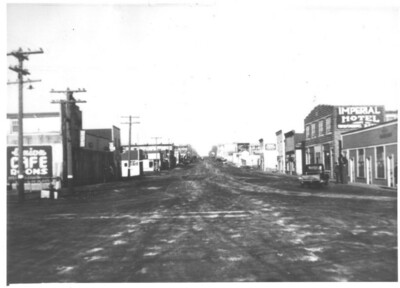
The Town of Edson was named after Edson J. Chamberlain, General Manager of the Grande Trunk Pacific Railroad in 1911.
The community was incorporated as a town in September of 1911. The railroad provided access to the rich Alberta Coal Branch and Edson acted as a supply depot as the railroad pushed west. It was also the jumping-off point for those who travelled the Grande Prairie Trail to homestead in the Grande Prairie Region.
During the 1930's, Edson saw carloads of bituminous coal from the Coal Branch roll through on their way to Canadian and world markets as the railways and mining industry became the main Depression-era employers.
Following World War II, the town improved its infrastructure and new businesses were launched. The conversion from coal and oil-fired railroad locomotives to diesel soon caused a decline in the mining industry, and this led to a decrease in population.
In the 1950's, upgrading of Highway 16 caused a dramatic increase in private, commercial and industrial traffic. Today, the Yellowhead Route carries some of the heaviest traffic flow in Alberta. The Yellowhead Route has been officially declared as the second Trans-Canada Highway(the first being Hwy. 1).
Petroleum headlined in the 1960's as petroleum-related industry brought prosperity to the Edson District. In the 1970's a revitalized coal industry saw the Cardinal River Coal and Luscar Sterco mines launched in the area.
The 1980's saw the development of Pelican Spruce Mills (now Weyerhaeuser Canada) and Sundance Forest Industries - two of Edson's major employers.
In the future, the area's natural resources are expected to remain major contributors to the Edson economy.
